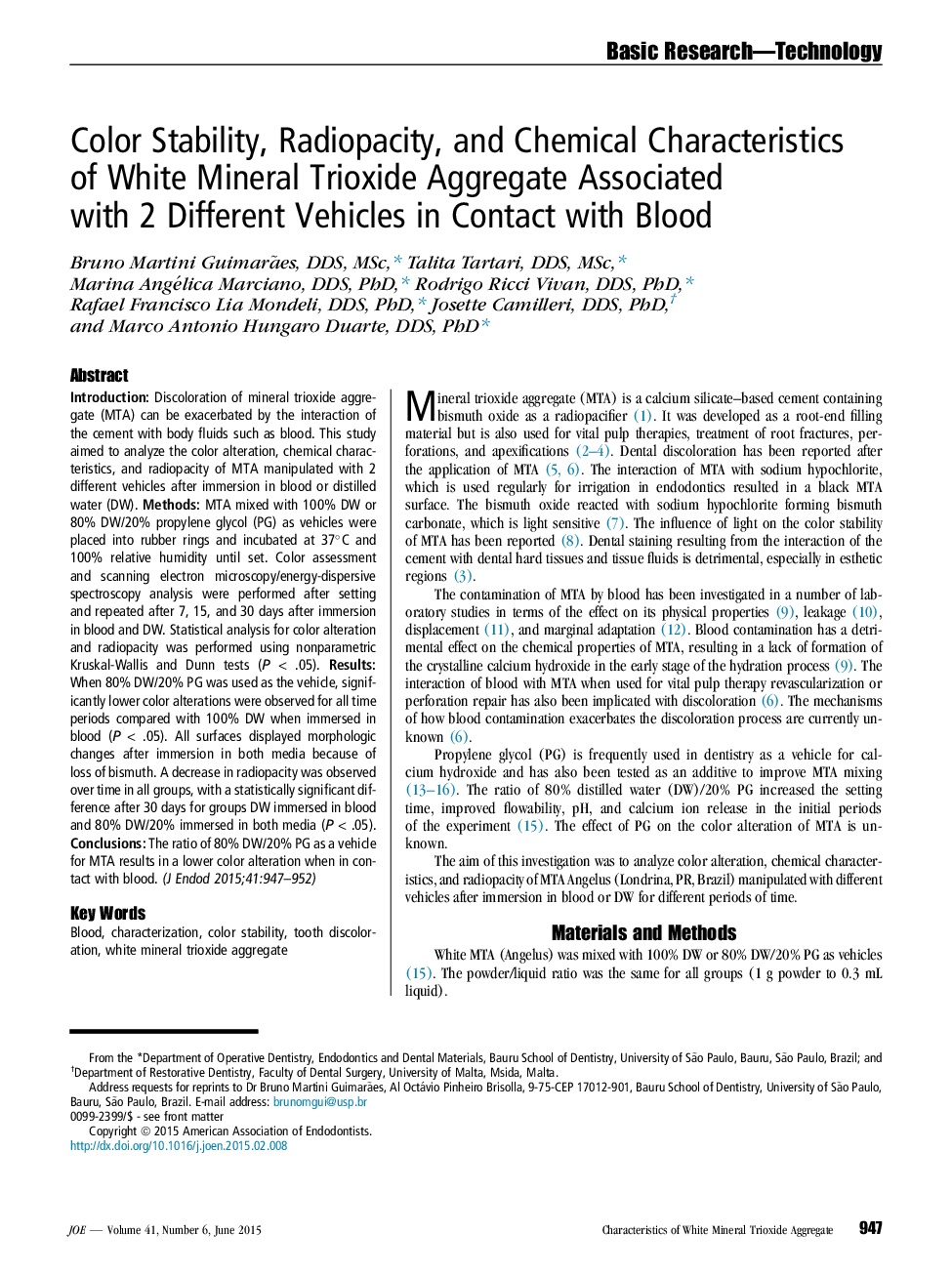| Article ID | Journal | Published Year | Pages | File Type |
|---|---|---|---|---|
| 3148191 | Journal of Endodontics | 2015 | 6 Pages |
•We evaluated a vehicle that results in a lower color alteration when in contact with blood.•Color assessment, chemical characteristics, and radiopacity alteration were analyzed in contact with blood.•Addition of 20% propylene glycol to the white mineral trioxide aggregate vehicle results in a low discoloration when in contact with blood.
IntroductionDiscoloration of mineral trioxide aggregate (MTA) can be exacerbated by the interaction of the cement with body fluids such as blood. This study aimed to analyze the color alteration, chemical characteristics, and radiopacity of MTA manipulated with 2 different vehicles after immersion in blood or distilled water (DW).MethodsMTA mixed with 100% DW or 80% DW/20% propylene glycol (PG) as vehicles were placed into rubber rings and incubated at 37°C and 100% relative humidity until set. Color assessment and scanning electron microscopy/energy-dispersive spectroscopy analysis were performed after setting and repeated after 7, 15, and 30 days after immersion in blood and DW. Statistical analysis for color alteration and radiopacity was performed using nonparametric Kruskal-Wallis and Dunn tests (P < .05).ResultsWhen 80% DW/20% PG was used as the vehicle, significantly lower color alterations were observed for all time periods compared with 100% DW when immersed in blood (P < .05). All surfaces displayed morphologic changes after immersion in both media because of loss of bismuth. A decrease in radiopacity was observed over time in all groups, with a statistically significant difference after 30 days for groups DW immersed in blood and 80% DW/20% immersed in both media (P < .05).ConclusionsThe ratio of 80% DW/20% PG as a vehicle for MTA results in a lower color alteration when in contact with blood.
